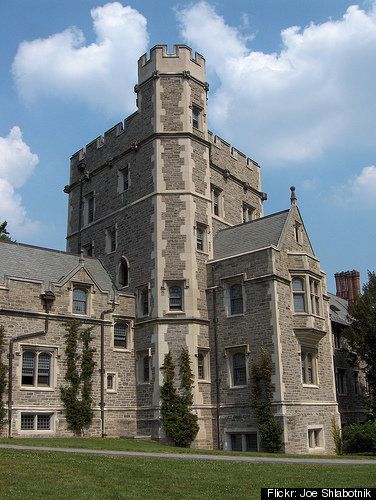
The Princeton Dinky, an 145-year old rail line connecting Princeton University to the Northeast Corridor rail line and clocking in at 4 minutes as the shortest passenger train ride in the United States, may soon be replaced by a bus rapid transit system. The Princeton Regional Planning Board and NJ Transit, the engineers of the plan, are aiming to cut increasing transportation and maintenance costs, but the Princeton community, university students, and alumni are opposing the move.
The clash takes place in the broader context of a national debate about the value of rail lines. While the federal government pumps money into some states to construct high-speed rail systems, the Dinky controversy between preserving infrastructure and using transit buses becomes all the more pointed.
Henry Posner III, a 1977 Princeton graduate and CEO of the Railroad Development Corporation, argues the Dinky should be preserved as an environmental and economic solution instead of liquidating long-term infrastructure benefits for short-term returns on real estate.
"With infrastructure, once it's destroyed it can't be replaced," Posner, who wrote his graduating Princeton thesis on the Dinky, said. "I think history has proven that if rail corridors survive they are valuable to the next generation."
Citing New York City's redeveloped High Line Park and its operational rail line, he said, "Most railroads are worth more dead than alive."
The plan hopes to replace the current single-track heavy rail line that runs around every half hour with a dedicated road for more frequent bus service. University Vice President and Secretary Bob Durkee is quoted as saying the Dinky is "an expensive service for New Jersey Transit to operate and to keep in good repair."
Princeton financial engineering professor Alain Kornhauser laments the idea of losing the Dinky for university plans to make way for an "Arts and Transit Neighborhood" with a new arts complex at its center. He proposes instead an underground passage from Princeton to Princeton Junction.
Regardless of the aims behind the plans, community members, alumni, and students alike have rallied behind the Dinky. A recent op-ed in the Daily Princetonian lamented the possible loss of "a great cultural landmark." A Facebook group page named "Save the Princeton Dinky" has attracted more than 5,653 Princeton residents and students and Dinky enthusiasts in around two months.
Anita Garoniak, a Princeton local who was moved to create the Facebook page after learning of the plans to replace the Dinky, admits that the line has its shortcomings.
"Some argue that BRT would be 'greener' - but the available studies indicate that this isn't true," she said. "It seems that the question is whether the inefficiencies should be addressed by getting rid of the Dinky and building something entirely new, or, alternatively, by improving the Dinky."
While some members of the Princeton community are defending the Dinky on material grounds, many just turn to the car's long history and local significance for their argument.
"Rail represents a fixed link between Princeton and the world," Princeton senior Ben Koczwarski said. "And I'd argue that you'd be hard pressed to find someone who gets nostalgic about a bus."
Built in 1865, the Dinky has ferried geniuses like Albert Einstein and John Nash to and from Princeton's campus. Woodrow Wilson, president of the University before his 8-year stint in the White House, began the journey to his inauguration on the Dinky in 1913.
For decades, the car shipped in female dates for Princeton students every weekend when the university would host popular Ivy League football games. Years later in the '60s, the Dinky was the scene of the last train robbery in American history, when a group of students on horseback fired a few pistol blanks and "stole" girls from the train.
"I'm not quite sure why, but I'll miss the sound of the Dinky whistle," Princeton junior Raymond Brusca said. "If only for the its long history, I think the Dinky represents something a little more than a means of getting from point A to point B."